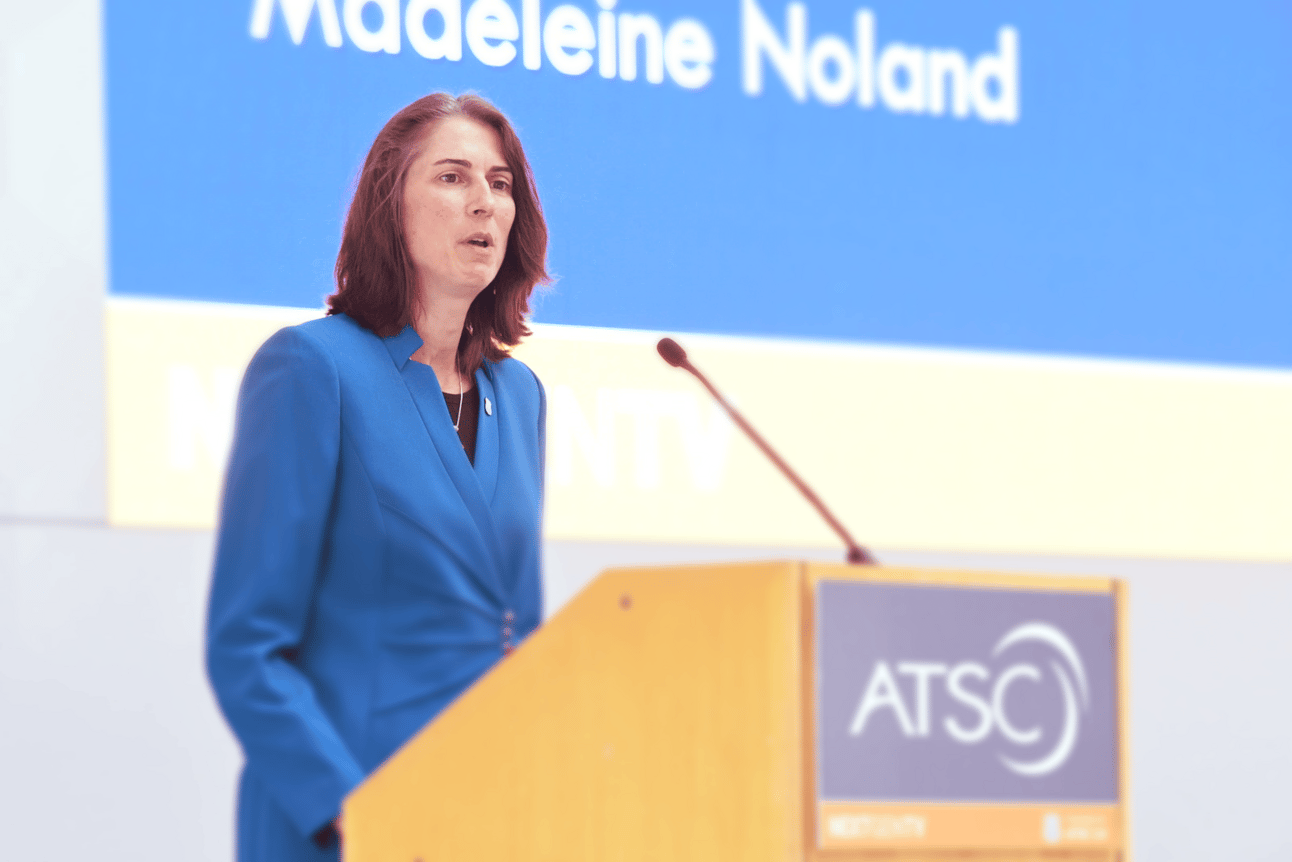- The tvRoom
- Posts
- Putting the 5G Cart Before the 3.0 Horse
Putting the 5G Cart Before the 3.0 Horse
Plus, Pepsi's sipping on something new.

Welcome to The TV Room. Your weekly digest of television, streaming, and digital media insights that matter.
This week we're covering:
🐎 ATSC Pulls the Reins on 5G
🎰 DraftKings Attempts Balanced Bidding
🎥 Creative Spotlight: Buffalo Wild Wings: “BUFFALO WILD WINGS VISION GOGGLES”
🥤 Pepsi Purchases Prebiotic Pop
ATSC Chief: Not So Fast on 5G
While some industry voices are eager to jump to 5G Broadcast as the future of mobile TV, ATSC president Madeleine Noland is pumping the brakes on that enthusiasm, arguing that the industry needs to complete its ATSC 3.0 transition first.

In a recent analysis for TV News Check, Noland points out some sobering realities about the proposed 5G Broadcast leap: there are currently zero consumer TV receivers that support it, and no clear path for getting the technology into TV sets. Meanwhile, ATSC 3.0 adoption continues to grow, with over 14 million compatible TVs already in American homes.
The timing isn't right either. US broadcasters face significant spectrum constraints during the ongoing channel-sharing transition period. Mobile broadcasting, regardless of the standard used, requires substantial bandwidth that simply isn't available while stations maintain ATSC 1.0 simulcasts.
Noland lays out the necessary sequence:
Phase out ATSC 1.0 simulcasts
Free up spectrum for mobile services
Wait for the industry hardware to catch up
Push compelling ATSC 3.0 content to drive consumer adoption
The pragmatic path forward? Complete the ATSC 3.0 transition to reclaim spectrum resources, then evaluate mobile options – whether that's 5G Broadcast, ATSC 3.0 mobile features, or even future 6G technologies. By then, results from early adopter markets like Brazil and India may provide valuable insights into the best approach.
"The cart does need to come after the horse, after all," Noland emphasizes, suggesting that while mobile TV's future is exciting, trying to force a 5G Broadcast solution too soon could derail the industry's careful transition plans.
Read More:
The Watchlist: The Great Attribution Heist
Is TV really driving incremental demand while search takes the credit? That’s the question Jason Fairchild, Co-Founder and CEO at tvScientific, poses in his recent LinkedIn post and accompanying article. He highlights a troubling reality: last-click attribution allows Google to claim conversions that TV advertising actually created. When a consumer sees a TV ad, searches for the product, and then purchases, search platforms swoop in to claim full credit.
What’s the real cost of overlooking TV’s true impact on brand awareness and incremental demand? And why are so many marketers settling for an attribution model that distorts where growth actually comes from? But he’s talking about more than lost credit—this is about misdirected budgets, undervalued channels, and a missed opportunity to see the complete performance picture.
Jason takes a look at how data now proves TV’s power to drive incremental sales—sales that search simply “takes” under flawed measurement practices. By treating TV as a mere supporting actor, marketers risk funneling more dollars into search while underinvesting in a channel that’s demonstrably moving the needle.
Read more:
TV Industry Updates
Wonder’s media move: Wonder acquired Tastemade to blend creative storytelling with CTV expertise.
FCC scrutiny: Sen. Blumenthal probed the FCC's practices amid concerns of political targeting against disfavored broadcasters.
AI ad caution: CTV ad buyers remain hesitant to fully entrust generative AI with high-profile creative, citing risks of synthetic visuals on the big screen.
Netflix steps up: Netflix introduced its Ad Suite, a proprietary tech platform designed to deliver personalized, member-centric advertisements.
Data meets TV: Spectrum Reach rolled out its Audience Reach Optimizer, a tool that harnesses household-level data from both traditional TV and streaming.
Stay up to date on the latest in TV advertising by joining our Slack community!
Creative Spotlight: Buffalo Wild Wings: “BUFFALO WILD WINGS VISION GOGGLES”
Buffalo Wild Wings cleverly parodied infomercial tropes in their March Madness campaign featuring their CGI mascot Hank pitching "B-Dubs Vision Goggles" as a solution for watching multiple games simultaneously.
The Details:
The 30-second spot introduced "Not Enough Eyes Disorder (N.E.E.D.)" as a humorous condition affecting March Madness viewers, with Hank demonstrating the mirror-equipped goggles as the solution.
The campaign included two 15-second companion spots that playfully undermined the product's claims, including one where Hank awkwardly confronts how unflattering the goggles look.
The integrated campaign extended beyond TV with actual $9.99 goggles available for purchase and a Snapchat lens, launching just before March Madness tournament play.
What We Loved: By creating a physical product that cleverly addressed a real sports-viewing pain point while embracing infomercial absurdity, Buffalo Wild Wings transformed a standard restaurant promotion into a memorable, shareable experience that nails their "wall-to-wall TVs" positioning.
Marketing Mix
Better-for-you takeover: PepsiCo acquired prebiotic soda brand Poppi for nearly $2 billion to bolster its health-focused portfolio.
Ad market slowdown: Madison and Wall downgraded US ad growth forecasts for 2025, citing the impact of current government policies.
Island escape: Beer brand Corona opened an eco-tourism destination on its leased island, inviting fans to experience a sustainable getaway.
Controversial campaign: A White House Tesla ‘ad’ featuring President Trump divided opinions, delivering mixed signals for the electric vehicle maker.
Newsletter monetization: Beehiiv launched a new Direct Sponsorships tool to help creators manage and profit from their ad inventory.
The TV Room is your go-to source for staying ahead in the world of television and digital media. Want to chat about these stories with other industry pros? Join our Slack channel to continue the conversation.